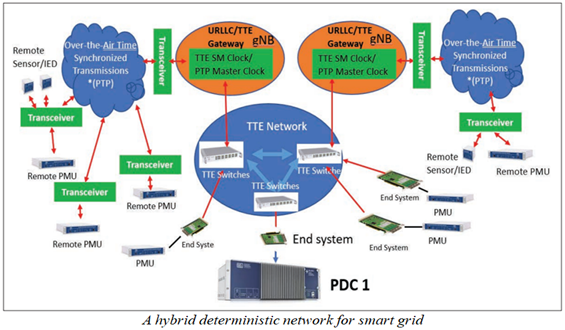NIST Researchers Investigate a Hybrid Wired/Wireless Deterministic Network for the Smart Grid

NIST researchers have published a technical paper in IEEE Wireless Communication: A Hybrid Wired/Wireless Deterministic Network for Smart Grid, to examine opportunities for new technologies to improve communications in certain power system domains. A key motivation is to address the lowlatency, low jitter, and high-reliability requirements of time-critical applications, such as smart grid synchrophasor communications.
In this publication, the authors consider a time-synchronized network that uses a combination of Time-Triggered Ethernet and 5G for high-speed, ultra-reliable, and low-latency communications. In this example, the network distributes universal time and synchronizes grid devices to a common time source. NIST researchers point out that this hybrid network must have high reliability and low delay wireless communications capability to complement traditional wired communication attributes for application sensors and data streams to be most useful, wherever wired access is not available. Such a network would be able to reliably connect large numbers of Phasor Measurement Units that monitor the health of the power grid.
NIST researchers also address the challenges of implementing such a network. Specifically, they point out that the main challenge will be achieving interoperability between Time-Triggered Ethernet and 5G ultra-reliable, low-latency communications. Another technical challenge will be integrating wired and wireless networks in order to coordinate and synchronize the timing.
Researchers simulated a hybrid network, including solutions for these challenges, for synchrophasor applications. Researchers reported the simulation showed that the proposed, fully synchronized hybrid wired/wireless network could achieve high reliability and low jitter, which are essential for synchrophasor communications.

